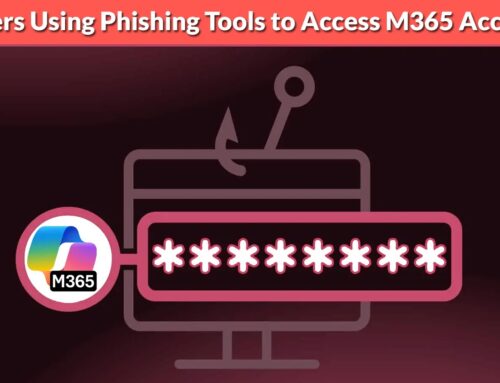
Canada Warns of Hackers Breached ICS Devices Controlling Water and Energy Facilities
Canada’s Critical Infrastructure Under Cyber Siege: An Urgent Call to Action for ICS Security
The digital guardians of our essential services are under attack. Canadian authorities have issued a stark warning following confirmed cyberattacks against internet-accessible Industrial Control Systems (ICS) devices across the nation. These incidents, targeting vital sectors such as water treatment, energy, and agriculture, highlight a growing and perilous trend: the increasing vulnerability of critical infrastructure to sophisticated cyber threats. For cybersecurity professionals, IT managers, and system administrators, this alert from the Canadian Centre for Cyber Security and the Royal Canadian Mounted Police serves as an urgent reminder of the imperative to secure our foundational systems.
The Alarming Scope of the ICS Breaches
The reported breaches are not isolated incidents but rather orchestrated attacks that have successfully compromised the operational technology (OT) environments of multiple Canadian entities. These intrusions into ICS devices, which are the backbone of modern industrial operations, pose direct threats to public safety, economic stability, and national security. The fact that these devices were found to be “internet-accessible” underscores a fundamental and often overlooked security gap.
- Targeted Sectors: Water treatment facilities, energy companies, and agricultural operations have been directly impacted. The potential for disruption to these services is catastrophic, ranging from tainted water supplies to widespread power outages and food chain interruptions.
- Nature of Compromise: While the full extent and specific attack vectors are still under investigation, the breaches indicate a successful exploitation of vulnerabilities that allowed unauthorized access and potential manipulation of critical operational systems. This could include remote code execution, data exfiltration, or denial-of-service attacks.
- Implications of Internet Exposure: The primary concern raised by Canadian authorities is the exposure of ICS devices directly to the internet. This significantly broadens the attack surface and makes these systems discoverable and exploitable by malicious actors worldwide.
Understanding the Threat: Why ICS are Prime Targets
Industrial Control Systems, including SCADA (Supervisory Control and Data Acquisition) and DCS (Distributed Control Systems), are designed for reliability and process control, often with less emphasis on cybersecurity compared to traditional IT networks. This historical design paradigm, coupled with their critical function, makes them exceptionally attractive targets for nation-state actors, financially motivated cybercriminals, and hacktivists.
- Operational Priority Over Security: In many legacy systems, uptime and functionality were prioritized over implementing robust security measures, leading to inherent vulnerabilities.
- Interconnectivity and IT/OT Convergence: The increasing convergence of IT and OT networks, while offering efficiency benefits, also introduces new pathways for cyberattacks to propagate from the enterprise network to critical operational systems.
- Availability of Exploits: Publicly known vulnerabilities in common ICS protocols and devices are readily available. For example, a vulnerability like CVE-2023-38600 (if applicable to specific ICS components) could be exploited to gain unauthorized access or control. Another example, depending on the specific equipment, might be CVE-2022-29806 which relates to certain industrial controllers. Organizations must diligently track and patch these vulnerabilities.
- High Impact, High Leverage: Successful attacks on ICS can yield significant leverage for attackers, whether for extortion, sabotage, or geopolitical destabilization.
Remediation Actions and Best Practices for ICS Security
In light of these alarming incidents, immediate and comprehensive action is required to bolster the defenses of critical infrastructure. Organizations operating ICS environments must prioritize security protocols and adopt a proactive stance against cyber threats.
- Network Segmentation: Implement strict network segmentation to isolate OT networks from IT networks and the internet. Use firewalls and demilitarized zones (DMZs) to control traffic flow and prevent lateral movement.
- Remove Internet Exposure: Critically assess all ICS devices and remove any direct internet exposure. Utilize secure remote access solutions (e.g., VPNs with multi-factor authentication) where remote access is indispensable.
- Regular Vulnerability Assessments and Patch Management: Conduct frequent vulnerability scanning and penetration testing specific to ICS environments. Establish a robust patch management program for all operating systems, applications, and firmware, prioritizing critical updates.
- Implement Multi-Factor Authentication (MFA): Mandate MFA for all remote access and privileged user accounts accessing ICS.
- Strong Access Controls: Apply the principle of least privilege, ensuring users and devices only have the necessary access rights to perform their functions. Regularly review and revoke unnecessary access.
- Intrusion Detection/Prevention Systems (IDPS): Deploy IDPS solutions tailored for OT environments to monitor network traffic for suspicious activities and known attack signatures.
- Comprehensive Logging and Monitoring: Implement centralized logging for all ICS events and conduct continuous monitoring to detect anomalies and potential breaches in real-time.
- Incident Response Plan: Develop and regularly test an ICS-specific incident response plan. Ensure clear communication protocols and roles are defined for cybersecurity incidents affecting operational technology.
- Employee Training: Conduct regular cybersecurity awareness training for all personnel, emphasizing the unique threats to ICS and the importance of adhering to security policies.
- Vendor Security: Collaborate with ICS vendors to understand security features, known vulnerabilities, and recommended best practices for their equipment.
Essential Tools for ICS Security Assessment and Defense
Implementing the remediation actions requires the right tools. Here’s a selection of categories and examples that can aid in securing ICS environments:
| Tool Name/Category | Purpose | Link (Example) |
|---|---|---|
| Industrial Firewall Solutions | Network segmentation and traffic filtering for OT environments. | N/A (Vendor specific like Palo Alto Networks, Fortinet, Siemens) |
| OT/ICS Network Monitoring (IDS/IPS) | Detecting anomalies, threats, and known attack patterns within industrial networks. | N/A (Vendor specific like Claroty, Dragos, Nozomi Networks) |
| Vulnerability Scanners (OT-specific) | Identifying known vulnerabilities in ICS devices, protocols, and configurations. | N/A (Vendor specific like Tenable.ot, Forescout eyeInspect) |
| Secure Remote Access Solutions (VPNs with MFA) | Providing secure, authenticated access to OT networks from remote locations. | N/A (Various commercial and open-source VPNs like OpenVPN, Cisco AnyConnect) |
| Asset Inventory & Management Tools | Discovering and cataloging all connected devices within the OT network. | N/A (Integrated into many OT security platforms) |
Conclusion: Fortifying Our Digital Critical Infrastructure
The warnings from Canadian authorities are a global wake-up call. The compromise of critical infrastructure ICS devices is not a hypothetical threat; it is an active and evolving challenge that demands immediate and sustained attention. By adopting a proactive security posture, implementing multi-layered defenses, and adhering to best practices, organizations can significantly reduce their risk exposure. The journey to a truly resilient critical infrastructure is continuous, requiring vigilance, investment, and a collaborative effort across all stakeholders. The integrity of our essential services depends on it.





